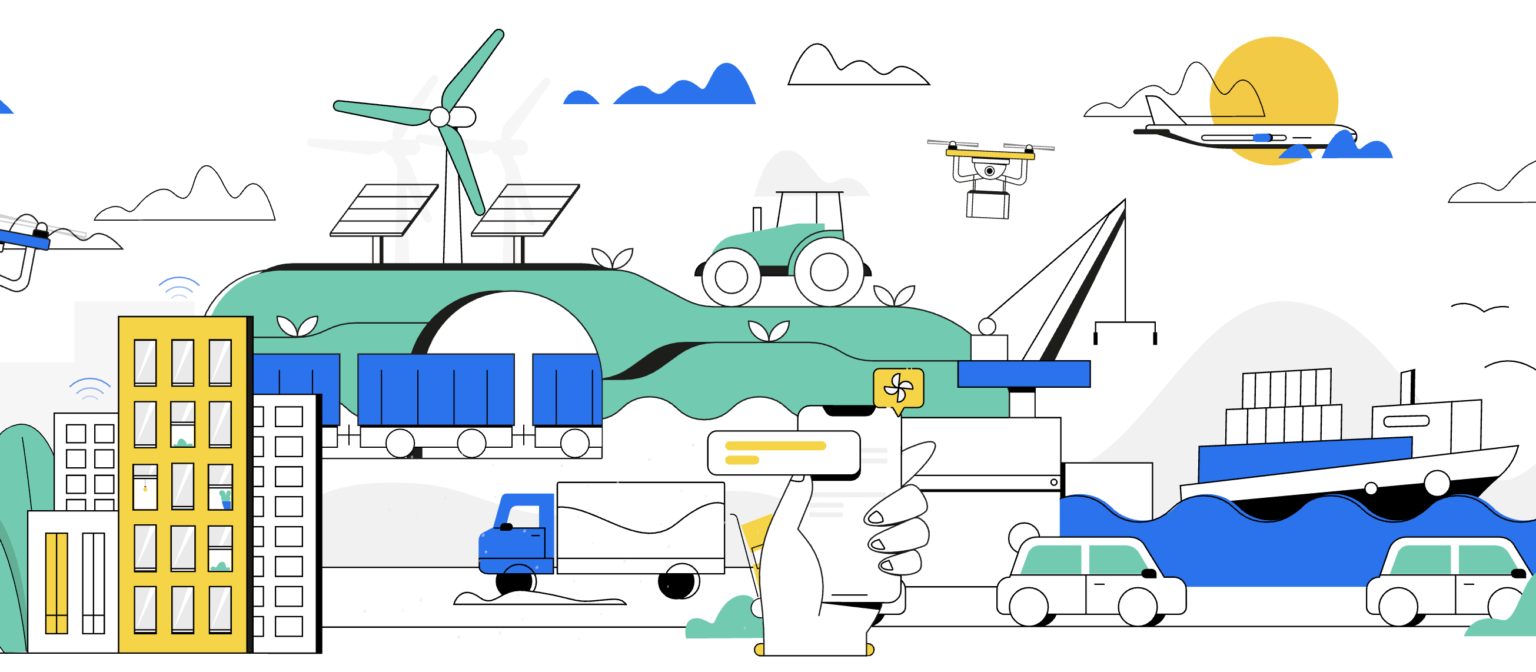As the world turns its eyes to the COP26 climate summit in Glasgow, Scotland, more and more business leaders are recognizing the impact of a changing climate and climate risk on business operations, both today and in the future.
In 2021, we’ve already seen some catastrophic weather events, from the polar vortex in Texas in February to the record-breaking heatwave across the US Pacific and beyond, and extreme flooding in New York. That’s not to mention the sandstorms, super cyclones, floods, and locust attacks that have hit the rest of the world.
As natural disasters become more common, and climate change continues to have a far worse impact than many people could have imagined, there is an increased threat to financial stability and risks to businesses worldwide.
Insurance company Swiss Re predicts that the world economy could lose up to 18% GDP from climate change if no action is taken.
But what impact will this have on businesses around the globe and how can you assess the real risk climate change will pose for your organization?
Pressure to Assess Risk Intensifies
Many companies currently do not have to disclose their exposure to climate-related risks, but this is likely to change. With extreme weather events having a severe impact on countries across the globe, pressure is growing on companies and business leaders to assess their climate risk and create a climate resilient approach.
Governments and institutions around the world are coming together to address the issue. In March of this year, The Commodity Futures Trading Commission launched a climate-risk unit that focuses on the role of derivatives markets in addressing climate-related risk and transitioning to a low-carbon economy. Then in May, the US House Financial Services Committee approved the Climate Risk Disclosure Act of 2021.
In a joint approach, the G7 backed moves to force banks and companies to disclose their exposure to climate-related risks on Saturday. A communique from the group stated:
“We support moving towards mandatory climate-related financial disclosures that provide consistent and decision-useful information for market participants.”
Understand the Situation
One of the pain points businesses face in assessing climate risk is gaining a complete picture of the situation. The first step in getting clarity is ensuring you understand the impact that a changing climate is having on your customers, your local area, your industry, and the general business landscape.
You need historical data that looks at the impact that the climate and weather have had on your business in the past. But you also need current local and global data, as well as predictions and models of how the climate will change in the future.
Some businesses will only focus on the physical climate risks, which will leave them with blindspots and unable to spot potential issues that might impact the business and the ability to deliver a product or service to customers. Indirect risks from climate change include:
- Change in government policy or industry regulations
- The impact on your supply chain
- Rising insurance policies
- Financial and political risk
- Reputational risk
- Increased competition for resources
- Impact on marketing
Taking into account all of the risks together can provide an idea of the exposure level of your business operations and help you build a framework that informs your response and to climate risks as they evolve.
Embed Risk Assessment Throughout Your Organization
Climate risk assessment isn’t a box-ticking exercise. It isn’t a process you can delegate to your corporate social responsibility department and forget about it. It also isn’t a way to just improve your reputation and attract customers. Assessing and managing climate risk to maintain compliance with regulatory or market standards alone isn’t enough.
Your risk assessment and response must be embedded within your company strategy and operations across the board. You must factor climate change into your capital allocation and business model. This isn’t a one-and-done process. Climate risks are constantly and rapidly evolving and any assessment needs to take into account both the current and future landscape.
While understanding the challenges and complexities of the effects of climate change isn’t easy, it’s important to take a proactive approach to assessing risk if you want to future-proof your business and gain a competitive advantage.
Act Now
The good news is that once you’ve completed your climate risk assessment, you might find that you only need to adjust your processes and you can use existing tools, rather than having to completely change course.
Whatever the situation, it’s important to act now so you can build a climate resilience strategy. To do that, here are some steps you should take:
- Assess the vulnerability of operations and facilities to climate risks and extreme weather events
- Embed climate risks into Enterprise Risk Management programs
- Undertake scenario analysis to quantify risks, opportunities, and identify potential responses
GET YOUR CLIMATE RISK ASSESSMENT NOW
A Shared Response Instead of a Common Response
Climate change affects different businesses in different ways, so no two risk assessments and responses will look the same. If you operate an offshore oil rig, you face different challenges than an airline or a sports event organizer. There is no one, common way to respond to the situation, but collaboration is still key.
While each business will have different risks and a different way to respond to that risk, collaboration and a shared response are key. Leaders across industries and countries need to work together to become climate-resilient, respond to risk, and adapt and succeed.
Not properly assessing risks and opportunities –– as well as failing to put in place tools and processes to adapt and respond to new risks –– could prove costly. But you don’t have to go it alone.
If you’re unsure how to proceed, you can work with experts at organizations like Tomorrow.io who can help you chart a course through the storm that is climate risk.















